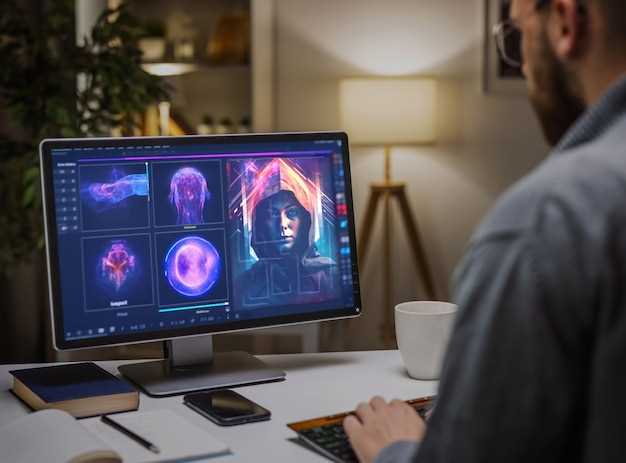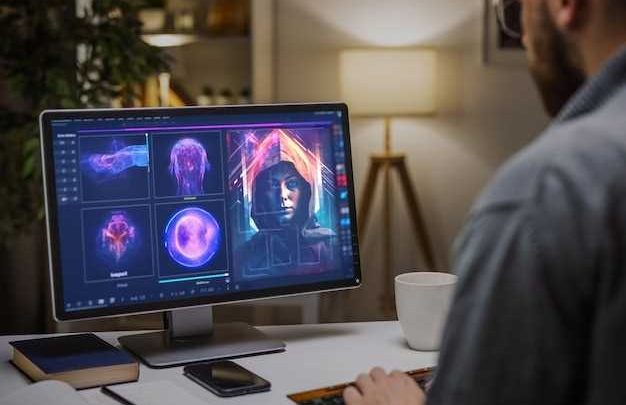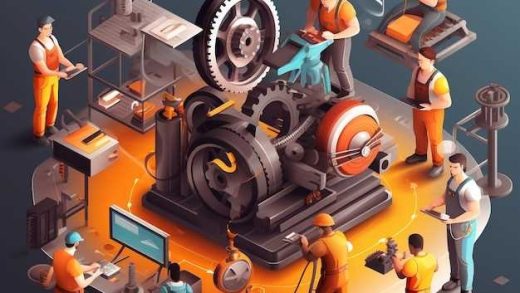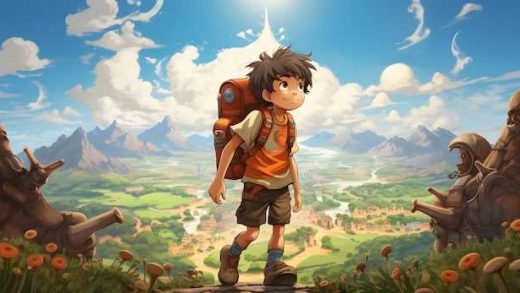
Embark on an extraordinary journey into the captivating realm of animated characters! Delve into the wondrous realm where artists possess the ability to breathe life into extraordinary beings that tug at your heartstrings, stir your emotions, and leave an indelible mark on your imagination.
Explore the intricate dance between imagination and creativity as artists transcend the boundaries of reality, fashioning a universe that transcends the mundane. Witness the magical process as ordinary ideas materialize into remarkable personalities – each endowed with a unique essence, charisma, and purpose.
Gain unprecedented access to the inner sanctum where brilliant minds harness the limitless potential of animation, weaving intangible emotions into tangible forms. Prepare to be enchanted as the secrets behind the alchemy of animation are unveiled, shedding light on the unseen artistry that lies behind every whimsical expression, every heartwarming gesture. As the encounters unfold, you will soon realize that more than brushstrokes or keystrokes, it is pure passion that gives birth to these animated wonders.
The Creative Journey: Crafting Characters for Animation
In this segment, we delve into the fascinating process of bringing characters to life for animated productions. Get ready to embark on a captivating exploration of the artistic voyage involved in the development of animated personalities.
Finding Inspiration: Exploring Sources of Creativity
In the quest to create captivating animated characters, the journey of finding inspiration is crucial. This article delves into the various sources of creativity that animators often explore to generate fresh ideas and breathe life into their characters.
1. Delving into Nature
One of the most abundant sources of inspiration lies in the natural world. Animators immerse themselves in the beauty of flora and fauna, observing intricate details, vibrant colors, and unique movements. The mesmerizing flight of a butterfly, the graceful sway of a flower in the wind, or the stealthy glide of a predator in the wild can all spark ideas for character designs.
2. Exploring Human Emotions and Expressions
Human emotions transcend cultural boundaries and provide a rich source of inspiration for animated characters. Exploring the depths of human expressions, gestures, and body language allows animators to infuse their characters with authenticity and relatability. Joy, anger, sadness, surprise – each emotion offers a unique opportunity for creating animated personalities that resonate with audiences.
| Sources of Inspiration | Description |
|---|---|
| Fantasy and Mythology | The realms of fantasy and mythology have long captivated storytellers. Drawing from magical creatures, legendary heroes, and mythical beings, animators unlock a world of imagination for their characters. |
| Everyday Life | The mundane aspects of everyday life can sometimes hold the most extraordinary stories. Observing people, interactions, and situations in our daily routines provides a wellspring of inspiration for animators. From the bustling streets of a city to the quiet solitude of a park bench, there’s always a character waiting to be discovered. |
| Art and Design | From classical paintings to contemporary graphic design, the world of art is an endless source of inspiration for animators. Examining different styles, techniques, and color palettes can shape the visual identity of animated characters, pushing the creative boundaries of their designs. |
By delving into the wonders of nature, exploring human emotions and expressions, drawing from fantasy and mythology, immersing in everyday life, and engaging with the vast world of art and design, animators embark on an exciting journey in search of inspiration. These diverse sources fuel the creative process, enabling animators to bring animated characters to life with depth, appeal, and enduring resonance.
Character Development: Bringing Imagination to Life
Unraveling the magic that lies behind the creation of captivating animated characters involves a fascinating journey through the realms of imagination and creativity. This section explores the process of character development, delving into the artistry and meticulous attention to detail required to breathe life into animated personas.
A World of Inspiration
Character development begins with the spark of inspiration, as artists draw upon a myriad of influences to sculpt unique and compelling personas. From observing everyday life to exploring fantastical realms, the sources of inspiration are as diverse as the characters themselves. Through research, artists delve deep into the essence of their creations, infusing their imagination with real-world observations.
The Sketching Stage
Once the concept behind a character takes shape, the sketching phase comes into play. With nimble strokes of a pencil, artists bring their visions to paper, exploring various facial expressions, body postures, and costume designs. This iterative process involves experimentation and refinement, as artists strive to capture the essence of a character’s personality and backstory through their visual representation.
The sketches act as a springboard for endless possibilities, allowing for further exploration of a character’s physical attributes, such as proportions, silhouettes, and distinctive characteristics. Through this artistic dialogue between hand and paper, the animated characters slowly transform from figments of imagination into tangible forms.
- Experiment with different facial expressions and body postures
- Refine costume designs to reflect character’s personality
- Explore proportions, silhouettes, and distinctive characteristics
This meticulous attention to detail ensures that the animated characters resonate with the audience, evoking emotions and connecting on a human level. The sketches provide a blueprint for subsequent stages, guiding the animators towards the realization of the characters in their animated form.
Character development is a complex and collaborative process that requires the collective efforts of a diverse team of animators, writers, and designers. Through a harmonious blend of imagination, technical expertise, and artistic finesse, these remarkable animated personas come to life, enchanting viewers of all ages.
Sketching and Concept Art: From Ideas to Visual Representations
In the realm of animated character development, the initial stages of creating captivating and visually appealing characters involve sketching and concept art. This pivotal process brings ideas to life through the transformation of abstract thoughts into tangible visual representations.
Planting Seeds of Imagination
Before any sketches or concept art can take shape, the seeds of imagination must be planted. Ideas, stories, and inspirations are gathered and explored to form the foundation for the character’s design. This stage involves brainstorming, researching, and immersing oneself in the world where the character will come to exist.
Translating Thoughts into Visuals
Once the creative seeds begin to sprout, the next step is translating thoughts into visuals. Sketching plays a crucial role in this process, allowing the artist to capture fleeting ideas and refine them into more concrete forms. This stage involves experimenting with different shapes, proportions, and features to bring the character to life on paper.
Concept art is then utilized to build upon the initial sketches and add further depth and detail. This stage involves creating more polished renderings that showcase the character from different angles and in various poses. It is during this phase that the character’s personality, traits, and story start to manifest visually.
Diving into the Creative Pool
Sketching and concept art serve as the gateway to the boundless creative pool, where ideas swim freely and artistic visions take shape. These early visual representations lay the groundwork for the entire character development process, acting as a visual guide for the animators and designers who will bring the characters to life through animation and modeling.
Through the art of sketching and concept design, ideas metamorphose from intangible concepts into captivating characters that enthrall and engage audiences. This initial stage is where the magic begins, as the artists embark on a journey of imagination and creativity, giving birth to beloved animated characters.
Animation Techniques: Giving Characters Personality and Movement
Exploring the artistry behind animated characters is a fascinating journey into the realm of bringing drawings to life. Within the creative realm of animation, various techniques and strategies are employed to infuse characters with unique personalities and captivating movements. This section delves into the ingenious methods employed by animators to breathe life into their animated creations.
Breathing Personality: One of the crucial aspects in creating compelling animated characters is the ability to enhance their personality traits. Animators utilize a plethora of techniques to imbue characters with distinctive attributes, making them relatable and memorable for audiences. By carefully manipulating the character’s body language, facial expressions, and even the timing of their movements, animators can successfully convey different emotions and temperaments.
Movement as a Language: Movement plays an integral role in defining and communicating the essence of a character. Animators utilize a wide array of techniques to stylize and refine the movements of their creations. Whether it’s through squash and stretch, anticipation, or exaggeration, each movement is carefully designed to convey the character’s unique traits and personality. By skillfully choreographing gestures, actions, and interactions, animators breathe life into their characters, allowing them to engage the audience on a deeper level.
The Power of Subtlety: Often, it is the subtle details in character movements that truly bring them to life. Animators pay meticulous attention to even the smallest nuances, such as a slight tilt of the head, a fleeting glance, or a gentle flick of the hand. These subtle movements add depth and authenticity to animated characters, making them more believable and relatable. By incorporating these minute gestures, animators create characters that resonate with viewers and evoke emotional responses.
Expressing Emotions: Emotions are the driving force behind any compelling character. Animators employ an array of techniques to effectively convey emotions through the movements of their creations. Facial expressions, body language, and timing are skillfully utilized to create a visual language that allows viewers to empathize with the characters’ experiences. By employing techniques such as exaggeration or stylization, animators can amplify emotions, creating a powerful connection between the character and the audience.
Bringing Characters to Life: In the world of animation, characters are not merely drawings; they are living entities that captivate audiences. This awe-inspiring feat is achieved through the skillful implementation of various animation techniques and strategies. By breathing personality into characters, utilizing movement as a language, paying attention to subtle details, and effectively expressing emotions, animators bring their creations to life, immersing viewers in the captivating world of animation.
Voice Casting and Acting: Adding Voice and Emotion to Characters
Exploring the art of voice casting and acting is an essential aspect of bringing animated characters to life. This section delves into the critical process of finding the right voice actors and ensuring that they can convey the required emotions and personalities of the characters.
1. The Role of Voice Casting
When it comes to animated characters, voice casting plays a vital role in determining their overall impact and believability. It involves analyzing the characteristics and traits of each character and finding a voice actor who can bring these qualities to the forefront. Voice casting aims to uncover the perfect blend of vocal range, tone, and timbre that aligns with the envisioned character.
In this stage, a comprehensive understanding of the character’s background, personality, and motivations is crucial. Voice casting professionals work closely with directors and writers to identify the specific traits and nuances that the voice actor should emphasize through their performance.
2. Bringing Emotion to Life
While voice casting is essential, the true essence of animated characters stems from the actors’ ability to evoke emotions effectively. Talented voice actors bring their skills to the table, embodying the characters in a way that elicits empathy and engagement from the audience.
During the voice acting process, actors rely on their vocal range, intonation, and pacing to express different emotions such as joy, sadness, anger, and fear. Directors provide guidance to ensure that the actors’ performances align with the desired emotional arcs of the characters and enhance the narrative of the story.
Furthermore, voice actors often employ techniques from traditional acting, such as method acting or improvisation, to fully immerse themselves in the character’s emotions. Their ability to convincingly portray these emotions through their voice allows the audience to connect with the animated characters on a deeper level.
In conclusion, voice casting and acting are integral components of developing animated characters. The careful selection of voice actors and their adeptness in depicting emotions serve as the voice and soul of the characters, enabling them to resonate with viewers on an emotional level.
Feedback and Iteration: Refining and Perfecting Animated Characters
In the dynamic world of creating captivating animated characters, the process of refining and perfecting their appearance and personality is a delicate dance of feedback and iteration. This crucial stage involves gathering insights and perspectives from various stakeholders and using them to continuously improve the characters, pushing the boundaries of their creativity and achieving their full potential.
Through a series of collaborative discussions and critiques, animators and designers engage in a constant feedback loop, carefully considering suggestions and observations to fine-tune the characters’ visual design, gestures, expressions, and overall portrayal. This iterative process allows the characters to evolve organically, ensuring they resonate with the intended audience and effectively convey the desired emotions and storylines.
Feedback and iteration play a vital role in overcoming challenges and uncovering hidden opportunities. By actively seeking input from colleagues, directors, voice actors, and even test audiences, animators can identify areas for improvement and make necessary adjustments. This collaborative approach fosters innovation and innovation and fuels the creativity, leading to the development of unique and memorable animated characters.
Moreover, the iterative nature of the refinement process allows for constant experimentation and exploration of different artistic techniques and styles. Animators can test various iterations of the characters, experimenting with different color palettes, shapes, and proportions. This iterative approach not only enhances the characters’ visual appeal but also helps establish their distinctive traits and characteristics, making them stand out in the vibrant world of animation.
Ultimately, the feedback and iteration phase is essential for achieving the desired level of quality and authenticity in animated characters. It enables animators to refine every aspect of their creations, incorporating valuable insights and perspectives along the way. By embracing this iterative process, the animated characters come to life, captivating audiences and leaving a lasting impression.



